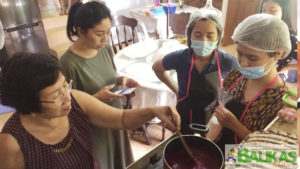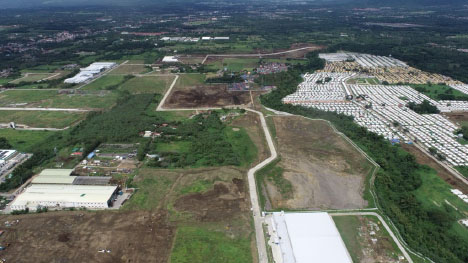By: John Maico Hernandez
CALABARZON’s red dragon known for its unique vibrant red skin, sweet seed-speckled pulp and nutritious content has proven why it became “superfood” as technology turned it into jam, wine and ready-to-drink juice products during the training on dragon fruit-based products processing conducted by DOST Batangas and University of the Philippines Los Baños Institute of Food Science and Technology (UPLB-IFST) at V&S Dragon Fruit Farm, San Joaquin, Sto. Tomas, Batangas, Aug. 31.
Dragon fruit as it is popularly known in the Philippines belongs to the Family Cactaceae under the genus Hylocereus and Selenicereus. It is a native plant from Mexico, Central and South America where they are called “pitaya” or “pithaya”. In Batangas, common site for dragon fruit farming is at Padre Garcia, Ibaan, Rosario and recently rising in Sto. Tomas.

According to research, it contains a surprising number of phytonutrients. It is also loaded with antioxidants, and is home to carotene, protein, vitamin C (said to be near 10 percent of the daily recommended value), polyunsaturated (good) fatty acids and B vitamins that may be needed for carbohydrate metabolism. In addition, this tropical fruit doesn’t contain complex carbohydrates, which may allow vitamin B1 (thiamin) along with other B vitamins in the body to break down food more easily in the body.
Ms. Sernie Manila, owner of family-operated V & S Dragon Fruit Farm, got interested in farming after her retirement from government service in National Food Authority seven years ago. It was his husband, Mr. Ben Manila’s passion influenced by the topographical condition of Sto. Tomas which led the two and her family into dragon fruit farming. The idea of venturing into dragon fruit farming rooted from their research on the health benefits that dragon fruits have.
The numerous number of fruit supply during peak season confronts many dragon fruit owners and V&S has no excuse. Whenever unsold, their dragon fruits normally become wastes. In response to this problem, DOST Batangas tapped UPLB-IFST to conduct product development to make a value-adding solution on dragon fruit and save all the recurring farm issue.
The training course was facilitated by UPLB-IFST Researchers, Ms. Claire Zubia and Ms. Diane Belan. Discussion on dragon fruit wine, jam, and ready-to-drink juice products processing were detailed out to participants. Good manufacturing practices to uphold product quality and consistency including products’ health benefits, costing, product packaging and labelling were also imparted to participants.
Trained participants evidenced learning thru satisfactory demonstration results. Trainors also led a one-on-one consultation on the issues the farm has already encountered in processing dragon fruit. A farm visit was also conducted before the training started. Extensive market potential of processed dragon fruit products was also discussed with the participants.|

















